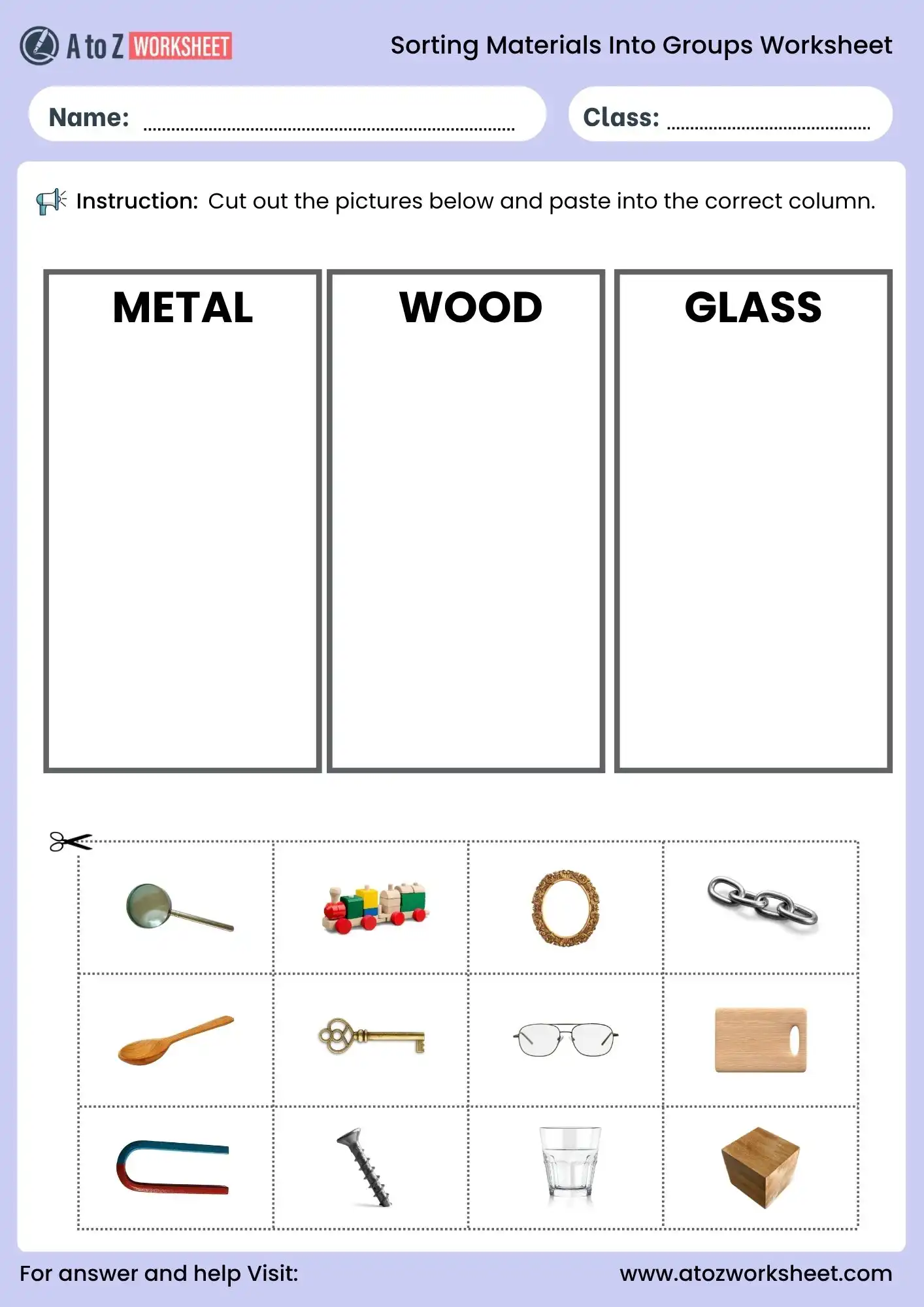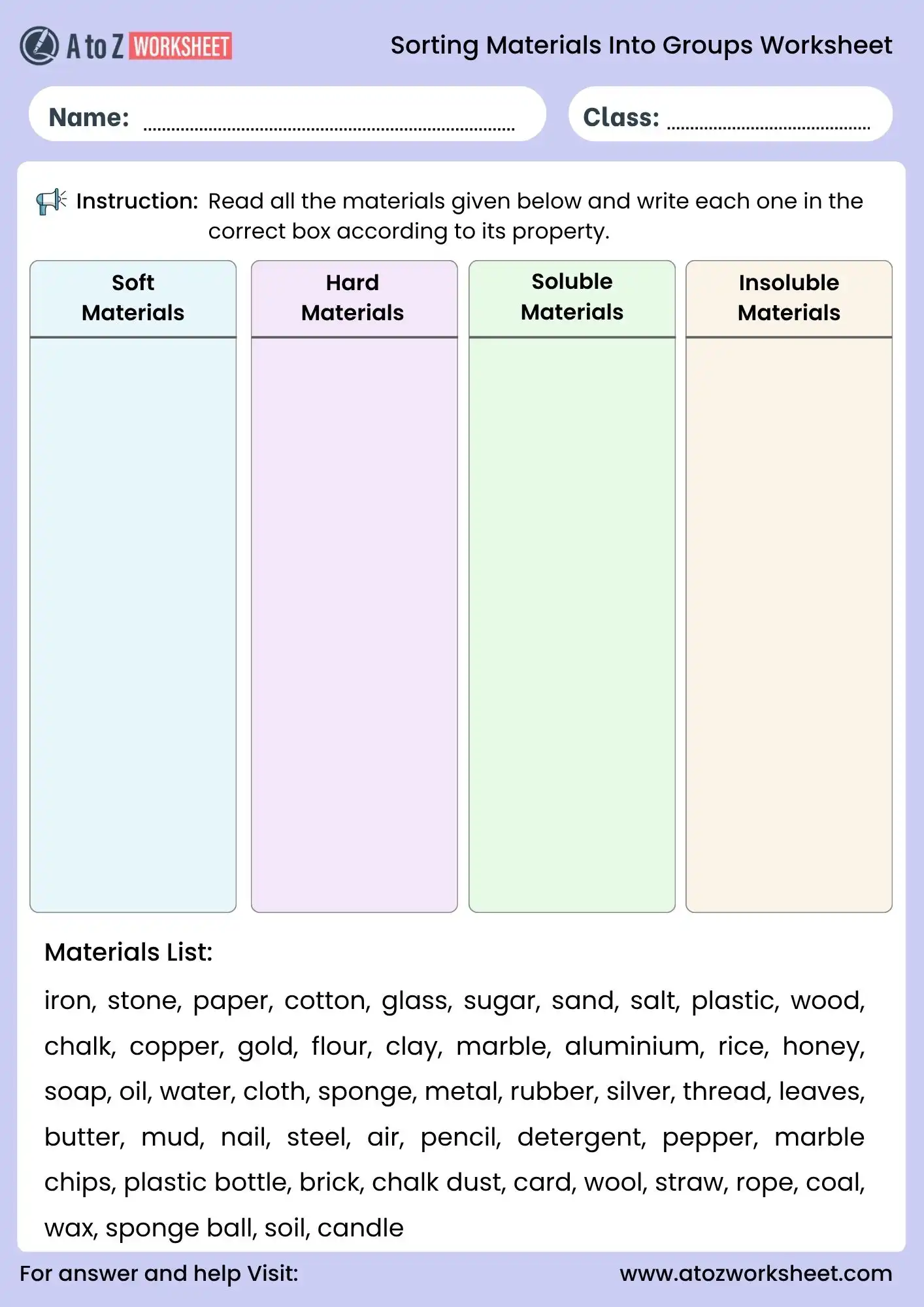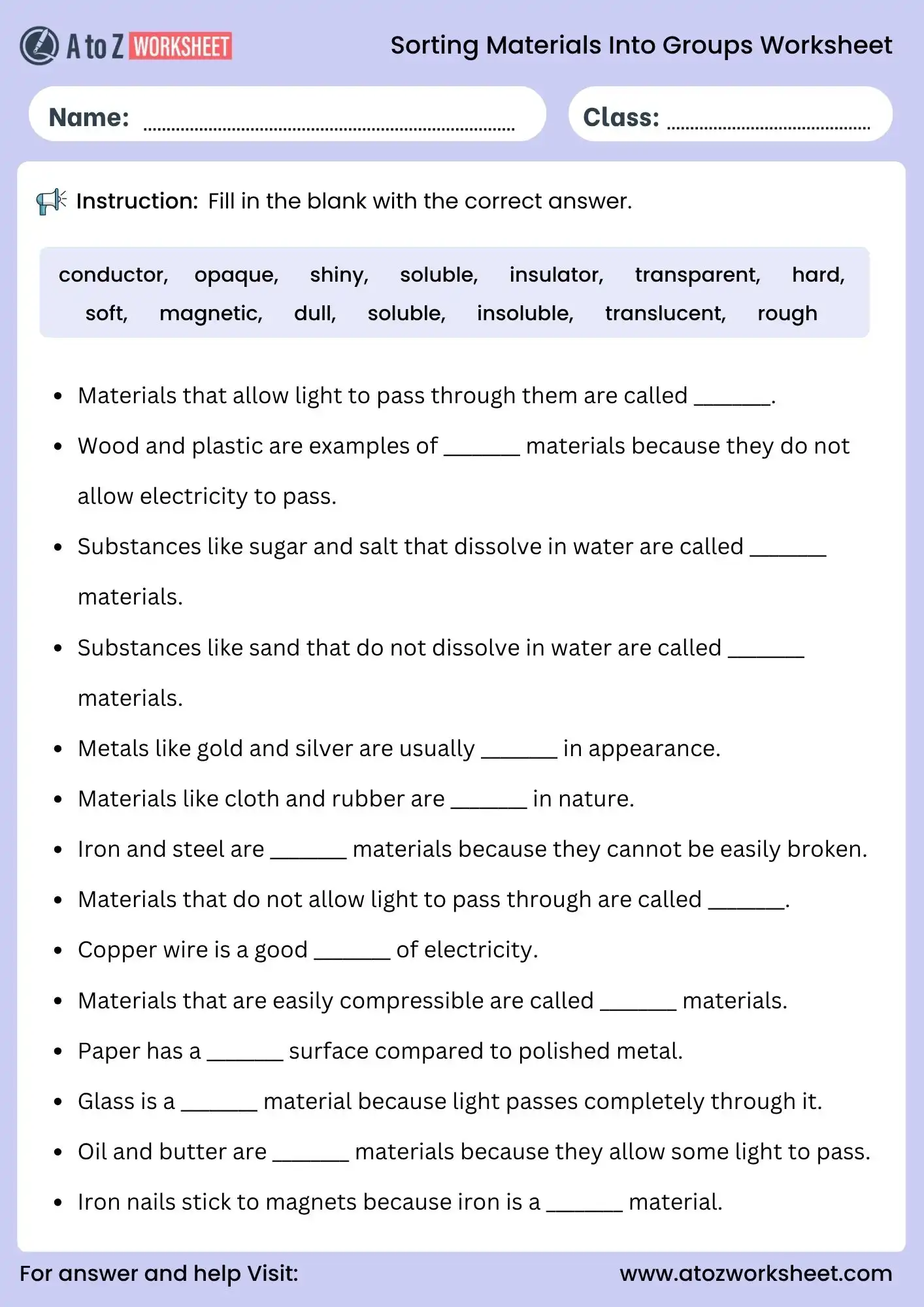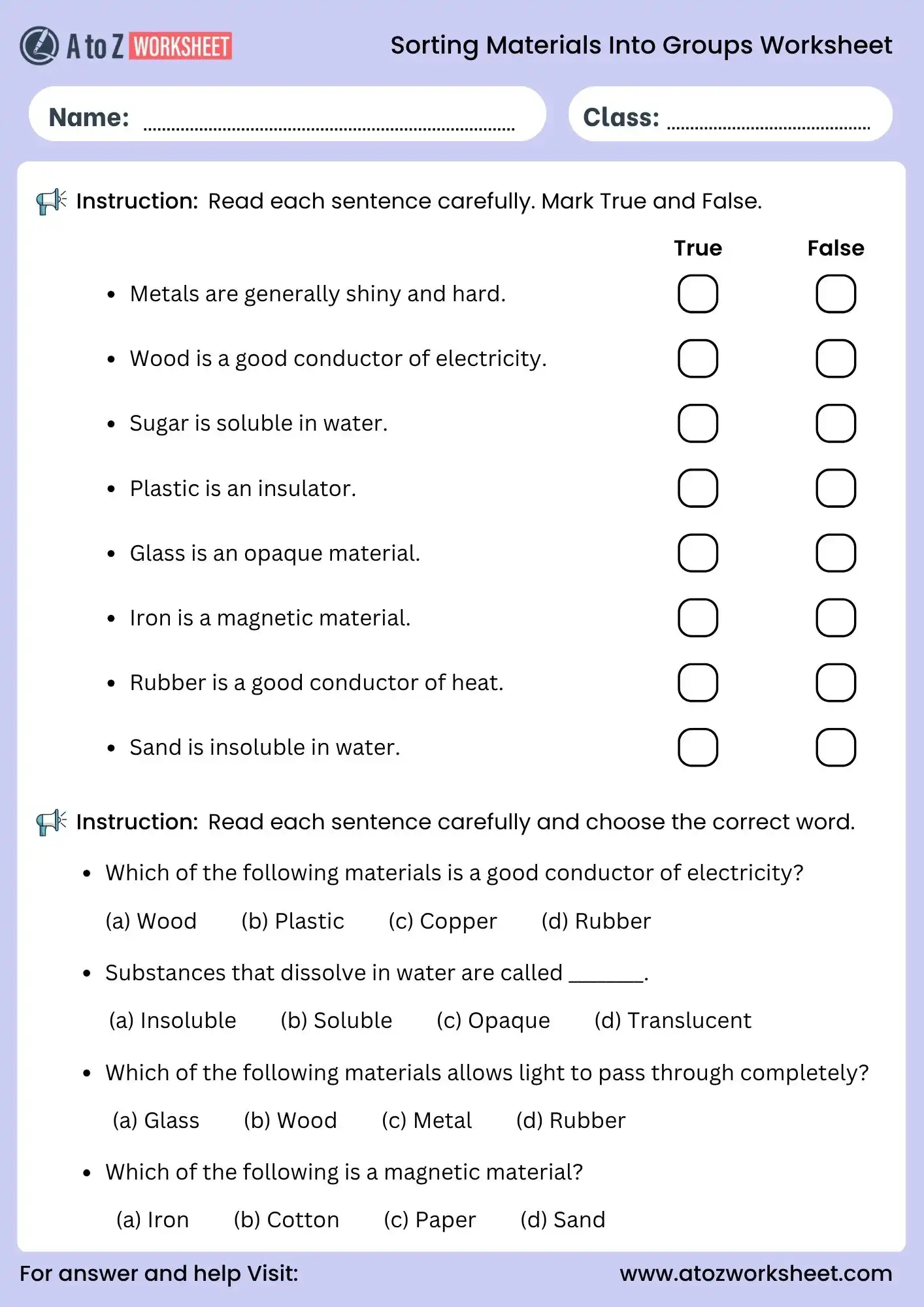Understanding how to sort materials into groups helps students explore the world around them. This sorting materials into groups class 6 worksheet with answers gives children a clear way to practice identifying, grouping, and classifying different materials. Designed for students, parents, and teachers, this resource includes guided questions and colorful visuals to make science learning more fun and easy to remember.
Everyday objects around us are made of different materials. Knowing their properties like hardness, texture, or transparency helps us understand their uses better. This activity allows children to observe, think, and apply what they’ve learned in a playful and engaging way.
Sorting Materials Into Groups Class 6 Worksheet With Answers and Free PDF For Kids
This printable worksheet helps children recognize the importance of classifying objects in daily life. The activities encourage observation skills, comparison, and logical reasoning. Students can sort items based on texture, appearance, or use while teachers can use it as a classroom revision tool or home learning aid.




Answers
Parents and teachers can use these answers to help students check their worksheets after practice. It helps children understand why certain materials belong to a group and improves observation and reasoning skills.
Worksheet 1 Answers (Sorting Materials Into Groups – Metal, Wood, Glass Activity)
- Metal: Key, Screw, Chain, Magnet
- Wood: Wooden spoon, Toy train, Wooden block, Cutting board
- Glass: Magnifying glass, Drinking glass, Spectacles, Mirror frame
Worksheet 2 Answers (Sorting Materials Into Groups – Soft, Hard, Soluble, Insoluble Materials)
- Soft Materials: Cotton, Sponge, Cloth, Wool, Butter, Sponge ball
- Hard Materials: Iron, Stone, Nail, Brick, Marble, Steel
- Soluble Materials: Sugar, Salt, Honey, Flour, Detergent
- Insoluble Materials: Sand, Plastic, Chalk, Soil, Wood, Wax
Worksheet 3 Answers (Sorting Materials Into Groups – Fill in the Blanks)
- Materials that allow light to pass through them are called transparent.
- Wood and plastic are examples of insulator materials because they do not allow electricity to pass.
- Substances like sugar and salt that dissolve in water are called soluble materials.
- Substances like sand that do not dissolve in water are called insoluble materials.
- Metals like gold and silver are usually shiny in appearance.
- Materials like cloth and rubber are soft in nature.
- Iron and steel are hard materials because they cannot be easily broken.
- Materials that do not allow light to pass through are called opaque.
- Copper wire is a good conductor of electricity.
- Materials that are easily compressible are called soft materials.
- Paper has a rough surface compared to polished metal.
- Glass is a transparent material because light passes completely through it.
- Oil and butter are translucent materials because they allow some light to pass.
- Iron nails stick to magnets because iron is a magnetic material.
Worksheet 4 Answers (Sorting Materials Into Groups – True/False and MCQs)
- Metals are generally shiny and hard. True
- Wood is a good conductor of electricity. False
- Sugar is soluble in water. True
- Plastic is an insulator. True
- Glass is an opaque material. False
- Iron is a magnetic material. True
- Rubber is a good conductor of heat. False
- Sand is insoluble in water. True
MCQs:
- Which material is a good conductor of electricity? → Copper
- Substances that dissolve in water are called → Soluble
- Which material allows light to pass completely? → Glass
- Which material is magnetic? → Iron
Sorting Materials Into Groups Class 6 Worksheet With Answers PDF Free Download
Teachers and parents can easily download this free learning sheet to support classroom lessons or home study time. The file includes practice pages with fill-in-the-blanks, table-based sorting exercises, and short questions. By using this PDF, children can improve their understanding of how to categorize materials effectively and confidently.
Related Worksheets May You Like
FAQs
What is sorting materials into groups in science class 6?
It is a science concept where students learn to group different materials based on their physical properties like color, hardness, texture, and solubility.
Why is grouping materials important?
Grouping materials helps us understand their uses and makes it easier to study and compare similar objects.
What are some examples of materials that can be grouped?
Examples include wood, metal, glass, plastic, and fabric — all can be grouped by their properties such as transparency or hardness.
How does this worksheet help students learn better?
It gives students hands-on activities and real-life examples to practice sorting objects, improving their observation and classification skills.
Can parents use this worksheet for home learning?
Yes, the worksheet is designed for both school and home learning. Parents can use it to reinforce classroom lessons and test understanding.
Summery
This sorting materials into groups class 6 worksheet with answers helps learners understand basic classification in science. It offers activities that guide children to sort objects using physical properties and everyday examples. Ideal for class 6 students, this printable worksheet and free PDF make learning interactive, engaging, and meaningful.
I hope you like it and to get such worksheets for students on different topics, keep visiting our website atozworksheet.com. For instant updates, follow us on Instagram, Facebook, Pinterest, Telegram and subscribe to our YouTube channel.

